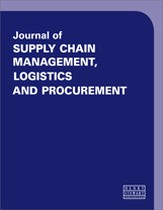Best practices to successfully integrate the strategic and financial objectives with the S&OP/IBP model
Abstract
The recent global disruptions that affected the industrial dynamics, from trade wars to the COVID-19 pandemic, from geopolitical tensions to the steep increase in energy cost and disruptions in the raw material sourcing and logistic dynamics, placed an unprecedented challenge on organisational supply chains, which had to reinvent themselves to maintain competitiveness, flexibility and reliability in an extremely volatile environment. Historically, supply chains relied on industry-standard planning models, such as sales and operations planning (S&OP) or integrated business planning (IBP), as a foundation of their planning process through a cooperative connection between demand and supply planning, and through an established process to collect all the key data and information in a consistent form to support all the critical decision-making processes. Nonetheless, in most cases, poorly or partially implemented S&OP/IBP models have failed to keep their promises, as companies struggled to achieve a full integration of processes, functions or key performance indicators (KPIs), while a robust integrated business process is able to guarantee a holistic and comprehensive planning and performance management system supporting the decisionmaking process and ultimately delivering a positive impact to the organisation’s profit and loss (P&L). A mature planning model should therefore embrace both a tactical and a strategic time frame, thus ensuring a strategic alignment, a ‘vertical link’, between the short to mid-term operational plans and the organisation’s long-term strategic objectives. The whole process consequently must be designed as a robust operating model allowing the organisation to monitor, update, execute and eventually deliver its strategic goals. This paper focuses on the best practices adopted by AkzoNobel to implement a mature IBP model across the whole organisation, and to achieve a full integration with the pre-existing financial planning processes in its journey that started in 2018 and is still ongoing today.
The full article is available to subscribers to the journal.
Author's Biography
Massimo Giannetto is the Global Head of Integrated Business Planning at AkzoNobel. With more than 20 years’ experience in business planning, demand and supply management, finance and project management, Massimo has worked for different multinationals in the chemical industry (DuPont, AkzoNobel) as well as a consultant in the financial industry, with a consistent track record of end-to-end demand-to-supply process overhauling, and strategic, financial and operational planning system implementation and integration. Currently he is leading the Marine, Protective and Yacht Coating Business Unit IBP management team at AkzoNobel, with the target to drive continuous improvement in the end-to-end demand and supply planning operations and processes to deliver a world-class IBP integration and performance. Massimo earned a Master’s degree in law and economics from the University of Verona, Italy, and an MBA from the University of Virginia Darden School of Business.
Citation
Giannetto, Massimo (2023, December 1). Best practices to successfully integrate the strategic and financial objectives with the S&OP/IBP model. In the Journal of Supply Chain Management, Logistics and Procurement, Volume 6, Issue 2. https://doi.org/10.69554/JHYS4908.Publications LLP
